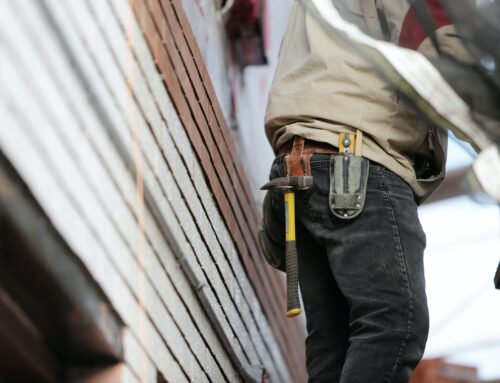
Gaining an in-depth knowledge of your home, inside and out, is essential to the life of your property. The exterior is the gateway, protecting your household and landscape surrounding it from the outside elements. One of the most important components of this exterior protection is your gutter system. Whether you currently own a home, are on the market for one, are considering a major renovation, or are in the planning process of a new-construction development, developing an understanding of the gutter systems available to you will give you peace of mind for all rainy days on the horizon. Read further to learn more about your more common options and the implications for each with respect to long term maintenance.
What Homeowners Need to Know About the Different Types of Common Gutter Systems
Aluminum Gutters
Aluminum gutters are the most common. They come the widest variety of thickness and gauge, including .032, .027 or even lighter, with each respectively recommended by the snow and rainfall common to a region. The harsher the winter and/or rainy season the more thickness and gauge you will require. There will always be an aluminum variety suited to your climate. The most common among aluminum gutters are the K-style gutters, which have flat bottoms and backs with the front-facing side more ornate depending upon the style of the home. Aluminum gutters are available in many decorative styles and colors, and can easily be painted to suit ever-changing tastes and home-exterior renovations. In addition, aluminum gutters don’t rust. Their “flexibility” in all capacities is essential to long term maintenance and repair, should you need to replace a section of your gutter system. Tracking down aluminum replacements and matching them to the existing system is an easy and ultimately affordable (approximately $2 to 4 per linear foot) task. When it comes to the DIY-homeowner aluminum gutters are highly recommended. And for those bringing in a professional to manage future gutter repairs, homeowners with aluminum systems will have a much easier time finding a quick-turnaround and cost-efficient gutter repair specialist.
Steel Gutters
There was a time when steel was the go-to for many builders deciding upon a strong gutter system for new development homes. Galvanized steel is a commonly used product among the options. Steel gutters are indeed strong and often found on homes fronting regions marked by severe seasonal storms. Steel gutters can also be painted and found in varying color varieties, although not as easily and readily available as their aluminum cousins. While steel gutters hold-up well to torrential downpours and high-winds they rust after about 5-10 years. The contradiction of steel gutters is that their sturdy construction is well-suited for coastal regions marked by winds and hurricanes (east coast) but the salt-water air will rust them closer to the early end of that 5-10 year spectrum. When it comes to the DIY aspect, homeowners are faced with a higher cost ($4 to $7 per linear foot) and working with the heavier steel material is far more cumbersome, including the chore of having to solder together steel components in some instances. Steel gutters may require less-frequent repair, but when the time comes the effort to repair them (painting over rust included) may exceed that of the frequency of the aluminum alternative. Finding an affordable gutter repair specialist in your area to manage such a system may be a challenge as well. If you are sold on steel gutters, seek out the pre-etched bonderized steel variety and keep a high-quality red-oxidized primer and paint on hand to cover your rust repair efforts.
Vinyl Gutters
Vinyl, or plastic, gutters are considered to be the ultimate in easy DIY gutter system installation and repair. They are found in most local home-improvement stores, are lightweight, and thus much less expensive than all other counterparts. However, this easy and low cost solution comes at a price. Their lightweight constitution of course makes them more susceptible to damage in harsher climates. On the flip side, those in hot and sunny climates are not let off the hook either, as vinyl gutters are at the mercy of ultra-violet rays and can discolor after a particularity hot and sunny season or two. If you live in a calm climate, and you’re OK with having to replace your gutter system at a low cost ( $1 to $3 per linear foot) from time to time, then vinyl gutters may work for you.
Copper Gutters
When it comes to aesthetic appeal cooper gutters win, hands down. They are beautiful. Copper gutters are most commonly found lining the eaves of heritage homes (restoration projects) or those luxury builds seeking that extra touch of class on the exterior. Eye-catching reasons aside, copper gutters are also very durable and long lasting. While copper does not rust it noticeably ages over time, yet the rich patina result is often a part of the visual appeal, with colors edging towards a light or brownish green depending upon the climate. Did we mention that copper gutters are beautiful?? The only drawback/s? Well, copper certainly doesn’t suit the style of every home (unless extensive customization is used to make it work) and the cost per linear foot is about three-times greater than that of the aforementioned alternatives. Novice DIY-ers planning on maintaining the life of their gutter system will want to steer clear of copper gutter maintenance and must seek out a professional gutter repair specialist to take on the task of soldering and all else.







Leave A Comment